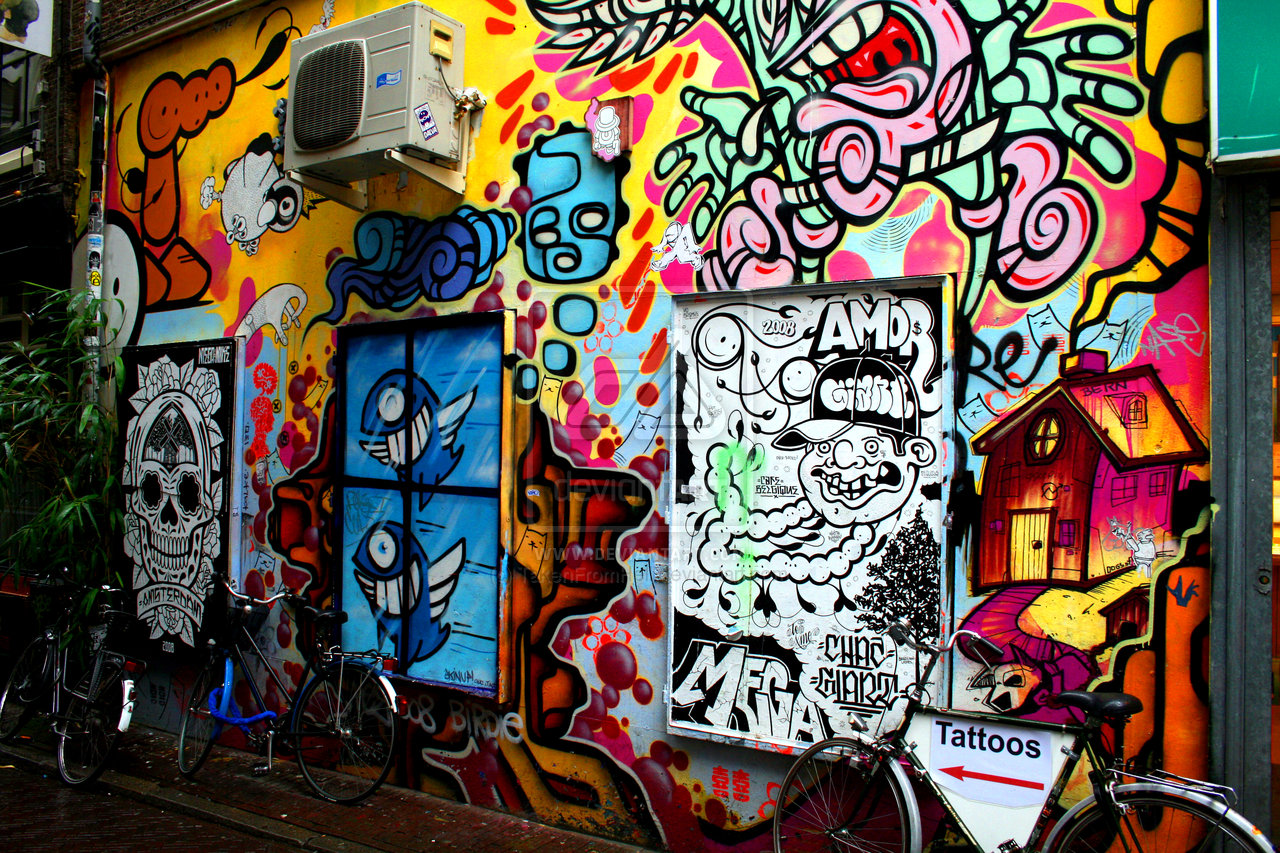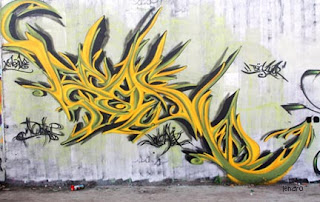Since the early Neanderthals scratched out the Bison on the moist caves of Eastern France, Graffiti and Street Art have remained a very raw form of expressive Fine Art, which have shunned all class barriers and have emerged as a separate thread of work. Graffiti is derived from the Italian root meaning, "scratched out." Technically, to narrow down its scope would be to define it as a surface art on the surfaces it is "not meant" to be displayed. For example, you would not define a ramshackle wall, or a car, or a window as a canvas to any artist worth his/her salt. For Graffiti Artists however, that would be a perfectly normal platform to present their body of work.
The profiles of Graffiti and Street Art closely follow an underground, anti-law route because of the angst they carry. They are art forms, usually generated in ghettos and tough neighborhoods, where there are few rules and therefore explosive creativity. Graffiti Artists are people, seething inside to stamp their territory, on walls, buildings, bridges, and yeah toilets too.
Graffiti and Street Art took a long time to come out of the ghettos, and be recognized as art. Although they are omnipresent phenomena, Graffiti and Street Art came onto the forefront only towards the development of the Hippie Culture in 70's. This was a time when people broke out of conditioning to see Graffiti & Street Art as art. The first opening of Graffiti was at Rome by Fab5 Freddy and soon other artists flooded the New York, London, and Paris art scenes.
Graffiti Artists are most often, nameless personas who treat art as a hit and run (often from the police and anti-graffiti squads). The process of claiming a patch of property (a wall, a car, a piece of tin, rooftops, and so on) is called "tagging" and it is a cross between turf war and creativity. Often gang wars have erupted on claims to turf. This is also, where Graffiti and Street Art connect with rap as an underground culture, which is always at odds with the civilized society. However, this edginess is what has given this art form a spontaneity that "designer" arts lack. The nervous energy is almost visible in the stark graphics and bold designs that spring out from the most unlikely of spaces. It is difficult not to appreciate this "vandalism" art form despite the gore and anger it carries.
Apart from the aesthetics of art, this art form is a visual documentation of grassroots societies, especially in western and Japanese sub cultures. Since Graffiti and Street Art are more a form of youth rebel art, the message that they seek to convey is at once in your face and subtle. There are subtexts that can be read from these Graffiti and Street Arts. For example, Graffiti Arts in Roman times is an important source of the study of society at that time (there is a Graffiti Art on the crucifixation of Jesus found in ancient Roman ruins).
However, with the lateral movement of Graffiti and Street Art into living rooms and art galleries, owing to avant-garde artistes, indicates that they have been accepted at large but the doubts remain. For example, Michael Fay stays hung between being labeled a criminal and an artiste in Singapore when he defaced a car. Whatever be the motive and the background of the creators of Graffiti and Street Art, it is undoubtedly an expression of passion, which finds many patrons.













No comments:
Post a Comment